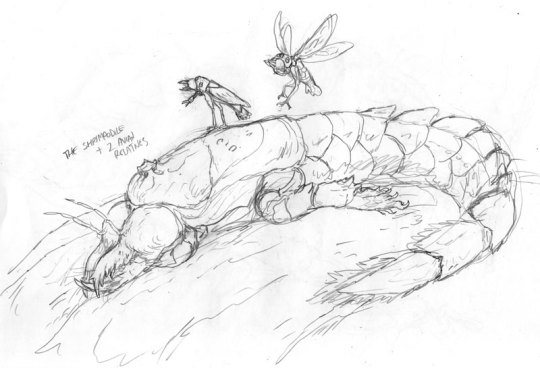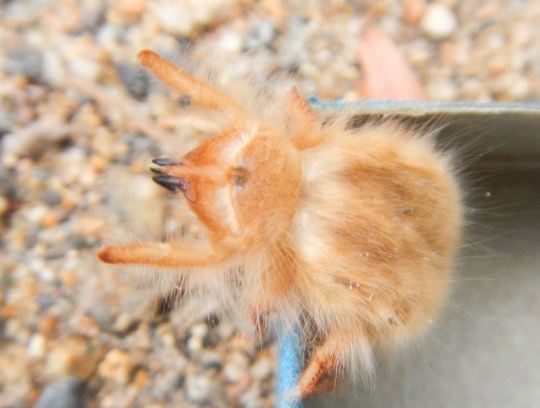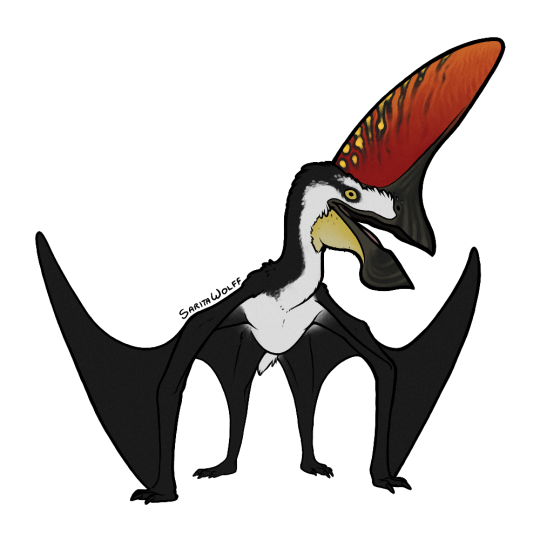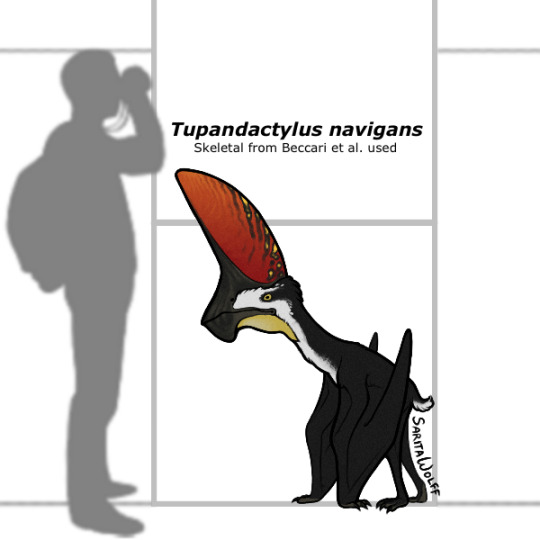#solifugid
Explore tagged Tumblr posts
Text

Teddy Bear Solifugid
#my art#creature design#monster design#character design#little guys#cute#illustration#solifugid#teddy bear#arachnids
266 notes
·
View notes
Text

#sun spider#solifugae#face#fuzzy#photographers on tumblr#textless#amadee ricketts#arizona#macro#cement#texture#in the yard#solifugid#derp derp derp
88 notes
·
View notes
Text
@lady-feste-pendragon
From here. If you think arachnids with long legs are just scary please watch this solifugid dig her nest (or try to) like SUCH a goofy little person creature. Look how she shoves dirt with her mouth and then gives it a little pat. Is she even making any progress?!
20K notes
·
View notes
Text

A European solifugid (Gluvia dorsalis) in Querença, Portugal
by stevenw12339
#european solifugid#solifuges#wind scorpions#camel spiders#arachnids#gluvia dorsalis#gluvia#Daesiidae#solifugae#arachnida#arthropoda#wildlife: portugal#wildlife: europe
49 notes
·
View notes
Text
I'm sure I have no reason to be bothered by this apart from petty nerd rage, because to be honest I've never met anyone IRL who's as annoying about taxonomy as I am, but I find it very weird how Arachnida has probably some of the most instantly recognizable and morphologically different orders in the entire kingdom, and they STILL get constantly mixed up with each other by people both online and offline.
Like if animals ain't your jam I get why at first you'd put any arachnid you see into the "looks-like-scorpion-must-be-scorpion" or "looks-like-spider-must-be-spider" categories. Everyone does that at some point. But sometimes one or a few people online will try to "correct" other people on their inaccurate naming and add a "fun fact" about arachnid taxonomy to put more color on their comment and like 99% of the time the whole thread turns into an absolutely incomprehensible mess where everyone is wrong and you weep because all of this could've been avoided with a 10-second Wikipedia check and LOOKING AT THE ANIMAL IN QUESTION.
#context I saw a Youtube short about Solifugids and the comments did dissapoint.#I should make a poll asking how familiar non-biology ppl are with taxo stuff but nobody sees this blog so ehhhhhhhhh#biology#arachnids#science
1 note
·
View note
Text
She looks like the Victorian era, great-grandmother of the wind scorpion.
I say this with appreciation.

[ID: An orange, shaded with purple trigonotarbid, a small devonian arachnid with a flattened, segmented abdomen. It stands on a green, branching clubmoss. The background is a dark teal, and the scientific name, Palaeocharinus rhyniensis, is written in green in the bottom right corner.]
299 notes
·
View notes
Text

Lolth is "the demon queen of spiders," but also all other arachnids --you'll find giant scorpions in her realm, and these giant solifugids (camel spiders) and pedipalps (Uropygi/whip-scorpions) (Jim Roslof, cover of AD&D module Q1: Queen of the Demonweb Pits, TSR, 1980)
#D&D#Dungeons & Dragons#Jim Roslof#Lolth#Queen of the Demonweb Pits#giant spider#demon#fiend#Abyss#dungeon#giant arachnid#dnd#AD&D#TSR#Dungeons and Dragons#1980s
111 notes
·
View notes
Text
Round 2 - Arthropoda - Arachnida




(Sources - 1, 2, 3, 4)
Arachnida is a highly diverse class, ranging from the Demodex mites living on you (yes, you) right now, to the Triassic-surviving horseshoe crabs (yes, a 2019 genetics-based analysis places them within Arachnida, though this is still debated), to your friendly pest-controlling house spider. They live worldwide, mainly on land, but some also in freshwater and marine environments. There are over 110,000 named species, with more being discovered every year. They comprise the Ricinulei (��Hooded Tickspiders”), Xiphosura (“Horseshoe Crabs”), Opiliones (“Harvestmen”), Solifugae (“Camel Spiders”), Acariformes (“Acariform Mites”), Parasitiformes (“Parasitiform Mites and Ticks”), Palpigradi (“Microwhip Scorpions”), Pseudoscorpiones (“Book Scorpions”), Scorpiones (“Scorpions”), Amblypygi (“Tailless Whip Scorpions”), Schizomida (“Short-tailed Whip Scorpions”), Uropygi (“Vinegaroons”), and Araneae (“Spiders”).
Adult arachnids have 8 legs attached to a head/thorax segment called the cephalothorax. Their abdomen contains their heart and respiratory organs. Arachnids also have two other pairs of appendages that vary in function between orders. The chelicerae are mainly used in feeding and defense. In spiders, they are used to deliver venom. The second pair, called pedipalps, are used for feeding, locomotion, defense, and/or reproduction. Scorpions, Pseudoscorpions, Ricinuleids, and Horseshoe Crabs have pedipalps that end in a pair of pinchers used for defense and manipulating food. Pseudoscorpions also have a venom gland in their pinchers which they use to immobilize prey. Vinegaroons, Schizomids, Amblypygids, and most Harvestmen have raptorial pedipalps that are used for capturing prey. Solifugids use their palps as another set of legs, and spiders use theirs like hands, while the males also use theirs for mating. Mites and ticks use their palps to sense their surroundings. Mites are more diverse than other arachnids, some only having 6 or even 4 legs. Adult females of Podapolipidae only have a single pair of legs. Some arachnids have a tail-like structure called a telson. Horseshoe Crabs use their telson to flip themselves over if they are turned on their backs. Scorpions use their telson as a stinger to deliver venom, while Palpigrades, Schizomids, and Vinegaroons use theirs as sensory structures. Schizomids and Vinegaroons can also produce acetic acid at the base of their telsons, which they use as a chemical defense sprayed at attackers. Instead of a telson, spiders have spinnerets on their abdomen which they use to create silk. Some have no eyes; some have up to six. Some only have very simple eyes which detect light and shadow, while others have very advanced eyesight.
Arachnids are so diverse that it would be impossible for me to provide a general summary of their behavior here. Some lay eggs, some bear live young. Some have intensive courtship rituals. In most, mothers provide parental care, but in some this falls on the fathers. They can be predators, scavengers, carnivores, omnivores, herbivores, parasites, and everything in between.
Arachnids are one of the oldest living Classes of land animals. Xiphosurans first appeared in the Late Ordovician, with modern horseshoe crabs appearing in the Carboniferous and becoming more common in the Triassic. The spider-like Order Uraraneida first appeared in the Permian, with true spiders appearing in the Carboniferous. There’s a lot of talk about how horseshoe crabs predate the dinosaurs, and that’s true, but so do other arachnids… and most other arthropods as well!

Propaganda under the cut:
While only Spiders, Scorpions, and Pseudoscorpions have venom, they all have different methods of injecting it, meaning they likely independently evolved venom. Which is wild to me.
Spiders tend to get a bad rap (mostly due to western media banking on arachnophobia and spreading misinformation) but they are incredibly beneficial to humans, eating many of the species we consider pests. Some crops, such as cranberries, tomatoes, and potatoes, rely on spiders for pest control. It has been found that wherever farmers release spiders, their crop yields increase, while also cutting down on the use of chemical pesticides by 80%.
There are around 50,000 species of spider and all but one family (Uloboridae) is venomous. However, this venom is mainly used to capture prey, and only 10 genera have venom considered medically significant to humans. Bites are rarer than the media would have you think, and deaths are even more rare, as they are usually a result of secondary infections, allergic reaction, or pre-existing conditions. You are more likely to die from a mosquito bite.
Even if they weren’t super important and helpful to humans, spiders are still just small animals living their lives and are all too often unfairly demonized. I’ll get off my soapbox now but listen… I’m Love Them. They are just little guys.
Anyway, Ricinuleids have a hood, called a cucullus, which can be raised or lowered over their head. This hood is also where females will carry their eggs until they hatch. Baby hoodie.
Horseshoe Crab blood is blue due to a copper-based respiratory pigment called hemocyanin. It is often harvested for its unique reactions to bacterial contamination and is thus used in FDA testing. Horseshoe Crab blood has saved millions of human lives, however, overharvesting for their blood as well as for fishing bait has put their populations into decline, which has in turn affected populations of shorebirds which depend on their eggs as migratory fuel. Many areas have enacted regulations on harvesting and established captive breeding programs.
Harvestmen are sometimes referred to as spiders, but they are actually closer related to scorpions!
Harvestmen are unique among arachnids for their high diversity of feeding behavior. Many species are omnivorous, eating small insects, fungi, and plants. Some species are scavengers. Some species feed on fecal matter! Unlike most other arachnids, they do not have sucking mouthparts, and instead chew their food with tiny pinching jaws.
Many arachnids, especially most scorpions, are biofluorescent, glowing under UV light. There are many hypotheses for why this is, but it may allow them to detect the presence of UV light themselves, letting them know when there is a full moon vs a new moon.
Scorpions can also detect light through sensors in their tail!
Scorpion claws and tails are reinforced with iron and nickel
Mites are incredibly diverse and live everywhere. Many live in the soil and aid in decomposing, some live in water, some live on plants, some live in plants and create galls, some eat fungi, some eat lichen, some eat carrion, some are predators, some are parasites. Almost every species on land (mammals, reptiles, ants, plants, etc) has at least one mite species associated with it.
Vinegaroon courtship rituals involve a dance that can last up to 12 hours of the female testing the male’s endurance. Female vinegaroons invest a lot into their children, often starving themselves in the process, so they must be absolutely certain the male has good fitness.
#you would not believe how hard it is to google colorful scorpion photos and not find either AI or pest control sources#Oogie Boogie Voice I Don’t Know Which Is Worse#Also I tried My Best to not get too passionate about spiders but like#Harvestmen are actually my favorite arachnids but I fear the bias against spiders is going to damage the results of this poll#and I love spiders I have 11 as pets not to mention the like dozen bathroom spiders who are great pest control and also friends#but the spider hate is so strong that I just worry#i understand if they don’t win but I also don’t want them to bring all the other arachnids down with them#round 2#animal polls#arthropoda
109 notes
·
View notes
Text

Spectember 2024 Day 25: Goliath Sun-Spider
The supercontinent of Jariloia is home to several different genera and species of solifugid that dwell in its semiarid to arid regions and feed on invertebrate and vertebrate prey of varying sizes. But none can approach the huge size and ferocious nature of Neosolifugus giganteus, which has a head-to-body length of 4.4 meters and a leg span of over 3.5 meters, inhabits Jariloia’s vast desert interior, and is also Potworia’s largest and heaviest solifuge. The Goliath Sun-Spider, which can sometimes rush across vast tracts of sand dunes at noon with lightning speed, usually shelters under large rocks or crevices during the hottest parts of the day and emerges to start hunting at night or under any other sort of low-light conditions. It can run at speeds of up to 100 km/h and preys upon sheep to pig-sized herbivores such as the common Kangaroo-Shrew, large relatives of spade-foot toads, calves and subadults of the Jariloian Oryx, and 2-meter-long worms that feed upon the desrrt bushes. During the breeding season the large female will lay a clutch of up to 160-170 eggs in a narrow burrow and will guard them until the moment they hatch.
#speculative#speculative biology#speculative evolution#speculative zoology#speculative ecology#speculative fiction#spectember#spectember 2024#creature concept#creature design
49 notes
·
View notes
Text
she is my babyyy <3333



i <3 solifugids they r my faaaav arachnids
1 note
·
View note
Note
solifugid or amblypigid? You Can Only Choose One
(asking the hard questions, this would be impossible for me)
I’m choosing to take this as though you’re approaching me with a bag of writhing arachnids that I can pick from and keep.
solifuge if it’s Rhagodes or Dinorhax rostrumpsittaci
if neither of those, then the ambly if it’s in a genus I don’t already have. I really don’t need more whitei
164 notes
·
View notes
Text

one of my own entries, for the REFUGIUM guidebook - the OG Shrimpodile (aka the Klakanto), a very fecund squilloid species whose numerous, numerous young are actually quite delectable when cooked over a charcoal grill!

i first drew this critter in 2018 as part of a worldbuilding jam w @jordankwalker (that would evolve into this current project) - back when these were all just fauna in a pseudo-solifugid world...

...but this shrimpodile wormed its way into the griz grobus universe, onto this foodcart...

who ended up starring in her own short story (which you can read here - https://webtoons.com/en/canvas/griz-grobus/pride-of-the-central-republic-page-1/viewer?title_no=741329&episode_no=31 ) called "PRIDE OF THE CENTRAL REPUBLIC"

(i also meant to draw a whole cute sequence showing how the shrimpodiles made it from the stream to the grill - farm to table shit- but this drawing was as far as i got)
But all this, of course, is in service of the big book, now in kickstarter - REFUGIUM! Take a peek at the campaign here

#simon roy#comics#griz grobus#habitat#scifi#kickstarter#sciencefiction#specbio#speculative zoology#speculative biology#speculative fiction#refugium2024
106 notes
·
View notes
Note
If you’re in the mood to drop bug knowledge, I’m sure Tumblr would enjoy an explanation for the jumping venomous “camelback spiders” that conservative social media is convinced have been attacking our brave soldiers
lol, again?! I remember this also happening when America invaded iraq back in like 2003. I think the name "camel spider" was even first coined then; in books the only common names I knew them under before then was "sun spider" and "wind scorpion," both of which are much cooler as well as more appropriate for something that runs as fast as the wind in bright, sunny places. But they do "chase" people in order to try and cool off in our shadows, leading to the belief that they're aggressive, and basically all the terror of them started because soldiers made up stories about them just to scare younger newer recruits as a prank, insisting that they're venomous or parasitic or that they'll chew your nose off while you sleep.

I think their tiny close-set black eyes and giant fat mouthparts give them an adorable sweet dopey face, though from the side it becomes sick and rad:

They can bite very hard and easily draw blood if you upset them, but they want to be left alone. Their jaws are only so big and strong because they're the arachnid version of a shrew: a fast-moving high energy predator adapted to quickly take down and devour everything else it comes across up to a couple times larger than itself, like lizards and centipedes!
They call this kind a teddy bear solifugid:

2K notes
·
View notes
Text

#Archovember Day 3 - Tupandactylus navigans
There were at least two species of the Tapejarid pterosaur Tupandactylus: T. imperator (who I’ve drawn previously) and T. navigans. Of the two, T. navigans is smaller, with a straighter, more upright crest. (A 2021 study suggests that the two species could actually represent sexually dimorphic members of the same species, but more detailed study is required to support this.) Either way, Tupandactylus is known for its huge keratinous crest, and T. navigans especially for its sharp shark-fin profile. This large crest likely limited T. navigans’ flight ability, relegating it to spending most of its time on the ground, only taking short flights to evade predators.
In 2022, A specimen of Tupandactylus imperator was discovered to have very complex branching pycnofibers (feather-like filaments unique to pterosaurs) that were much closer to true feathers than previously thought possible in pterosaurs. This could be further evidence that feathers are a basal trait to Avemetatarsalians. Also, similar to Anchiornis, Tupandactylus has been found with preserved melanosomes. However, paleontologists did not attempt to infer the color of the animal, but merely noted that the melanosomes were varied between the skin of the crest and the pycnofibers on its skull, probably providing some sort of contrast for the head ornamentation. No doubt imperator’s smaller cousin navigans was similar.
Living in Early Cretaceous Brazil, Tupandactylus navigans had a diverse array of frogs, lizards, and invertebrates to prey on, including moths, lacewings, mayflies, scorpions, and solifugids. T. navigans could have also preyed on small dinosaurs and their eggs, such as Enantiornithine birds and the compsognathid Ubirajara. T. navigans would have shared its environment with many other pterosaur species, such as its cousin T. imperator, Arthurdactylus, Aymberedactylus, Brasileodactylus, Lacusovagus, and Ludodactylus.

(As I’ve drawn T. imperator previously, but not with its own size chart, I’ve chosen to include it as a bonus here so the two species can be compared. I’ve also updated my imperator design a bit, as it was drawn before the 2022 study.)

#my art#SaritaDrawsPalaeo#Tupandactylus navigans#Tupandactylus#Tupandactylus imperator#tapejarid#pterodactyloid#pterosaurs#archosaurs#archosauromorph#Archovember#Archovember2023
53 notes
·
View notes
Text
none of you will experience the high my partner and i experienced last night when we found a solifugid, the invertebrate i have been chasing since i found out they were in our state, and then walked five more steps and found an ord's kangaroo rat. our level of hype was unparalleled.
13 notes
·
View notes
Text
From here. If you think arachnids with long legs are just scary please watch this solifugid dig her nest (or try to) like SUCH a goofy little person creature. Look how she shoves dirt with her mouth and then gives it a little pat. Is she even making any progress?!
4 notes
·
View notes